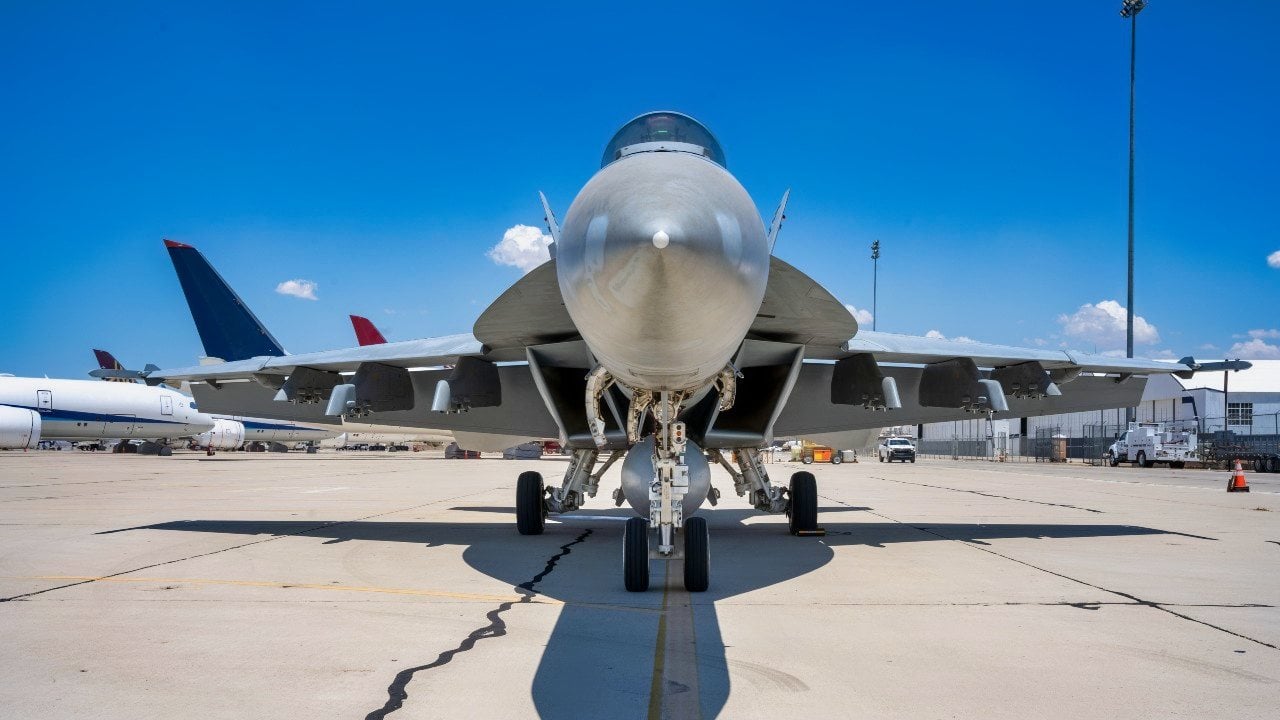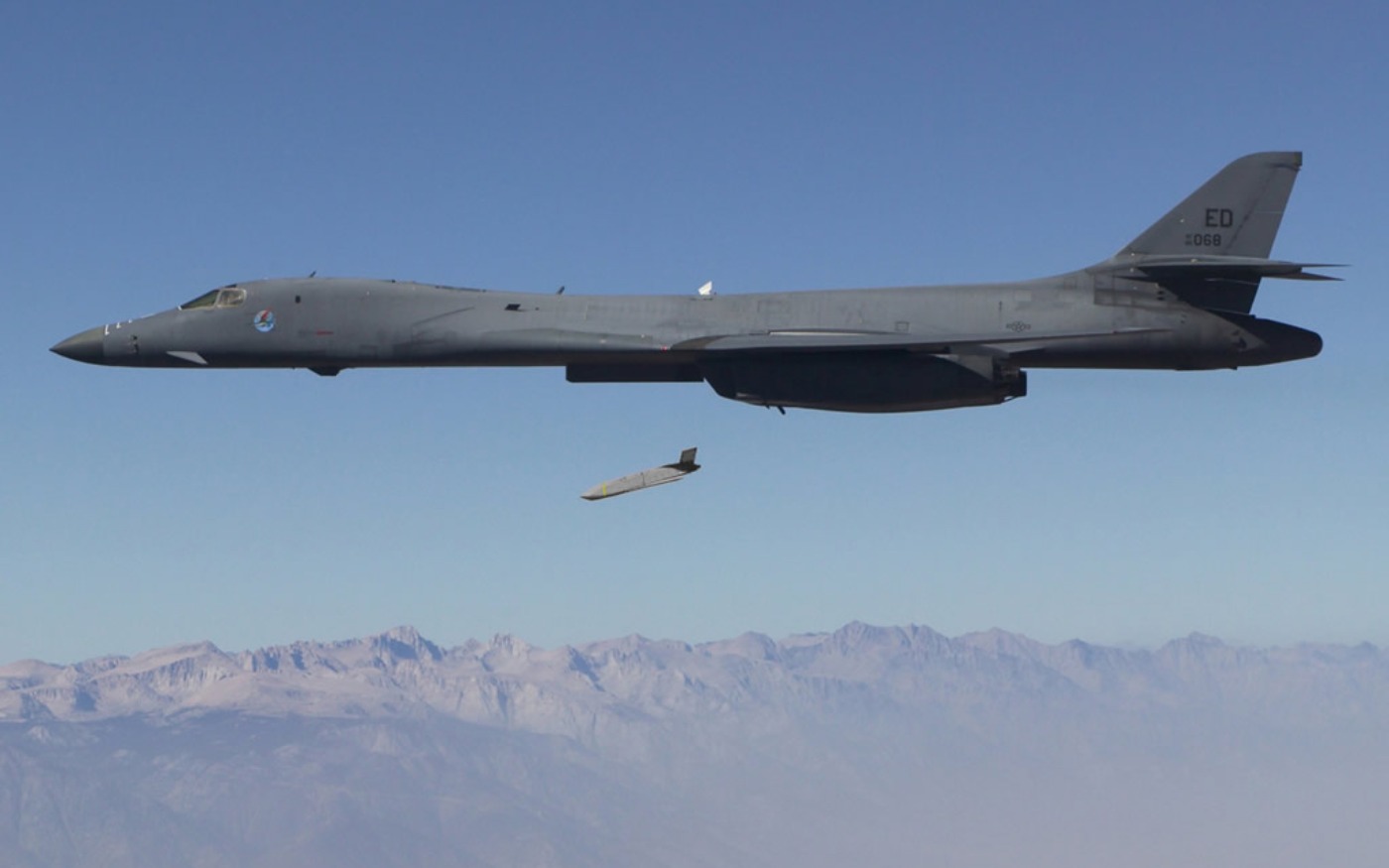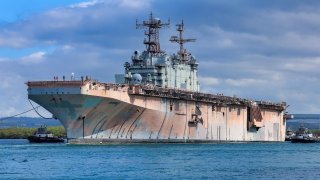Warships Sunk: Super Hornet Fighter Strikes 'Mini-Aircraft Carrier' with Stealth Weapon
As always, live fire exercises provide the most excitement and the SINKEXs were no different. Reportedly, the USS Tarawa - what some consider a mini-aircraft carrier of sorts - was sunk by a F/A-18F employing an LRASM.
Summary and Key Points: The 2024 Rim of the Pacific (RIMPAC) exercises, held in Hawaii, featured military forces from 29 nations practicing various tactics, including amphibious operations, missile defense, and humanitarian assistance.

-A highlight was the SINKEX events, where live ordnance, including the advanced AGM-158C Long Range Anti-Ship Missile (LRASM), was used to sink retired ships. The LRASM, known for its stealth and advanced guidance, showcased the U.S. Navy's growing capabilities.
-Additionally, a South Korean ship successfully fired Poniard rockets from a Common Unmanned Surface Vehicle (CUSV). The exercises underscored the U.S. and its allies' readiness amid rising tensions in the Pacific.
2024 RIMPAC - SINKEX and New Weapons
Last week, the U.S. Navy wrapped up its biennial Rim of the Pacific (RIMPAC) exercises in Hawaii. These drills, which involved ships and personnel from 29 countries, brought together U.S. partners from around the world to practice tactics, techniques, and procedures as well as testing out new weapons systems.
Some of the highest profile events were the two SINKEXs, where ships and crews practiced firing on, and sinking two retired ships with live ordnance. One of these included one of the most advanced weapons in the U.S. Navy’s arsenal, the AGM-158C Long Range Anti-Ship Missile (LRASM).
RIMPAC and SINKEX
Since 1971, RIMPAC has regularly brought together the armed forces of nations with an interest in the Pacific. These include everyone from European states like Germany and Belgium, states with coasts on the Eastern Pacific, like Chile and Canada, to island nations in the heart of the Western Pacific like Malaysia and the Philippines.
Over the course of the exercise, participating members practice: “amphibious operations, gunnery, missile, anti-submarine, and air defense exercises, as well as military medicine, humanitarian assistance, disaster relief, counter-piracy, mine clearance operations, explosive ordnance disposal, and diving and salvage operations.”
As always, live fire exercises provide the most excitement and the SINKEXs were no different. Reportedly, the USS Tarawa - what some consider a mini-aircraft carrier of sorts - was sunk by a F/A-18F employing an LRASM.
An overview of LRASM
The AGM-158C LRASM is the maritime variant of the AGM-158 Joint Air-to-Surface Standoff Missile (JASSM) which has been in service since 2003.
Employed by both the F/A-18E/F Super Hornet and the B-1B Lancer, the LRASM uses stealth technology from the JASSM while adding improved guidance and sensors that “reduce dependence on intelligence, surveillance and reconnaissance (ISR) platforms, network links and GPS navigation.” These capabilities decrease risk for aircraft and give the Navy a flexible standoff weapon for attacking enemy ships in a high denial environment.
While the LRASM has obvious value, the Navy and Air Force are working to build up their stock. The Air Force purchases the missile for both services; initially, only 27 were acquired in fiscal year ‘24; however, with its clear success, the Air Force has requested a buy of 549 through 2029.
What about other munitions?
The LRASM launch was certainly a high point and demonstrated the advancing technologies of the U.S. Navy as it races to keep up with peer competitors and the pacing threat of the PLAN however other emerging technologies were also on display
. A South Korean ship deployed a Common Unmanned Surface Vehicle (CUSV) which successfully fired at, and hit, a target with Poniard rockets. These 2.75in guided rockets are developed by a South Korean firm and, when coupled with the CUSV, may play a part in the “Hellscape” strategy in a potential conflict with China.

With near-constant saber-rattling over the fate of Taiwan, tensions in the Pacific have rarely been higher.
The successful conclusion of RIMPAC and the demonstration of U.S. and allied capabilities will hopefully serve as a powerful deterrent to any who would seek to disturb the peace.
About the Author: Maya Carlin
Maya Carlin, National Security Writer with The National Interest, is an analyst with the Center for Security Policy and a former Anna Sobol Levy Fellow at IDC Herzliya in Israel. She has by-lines in many publications, including The National Interest, Jerusalem Post, and Times of Israel. You can follow her on Twitter: @MayaCarlin.
Image Credit: Creative Commons.


